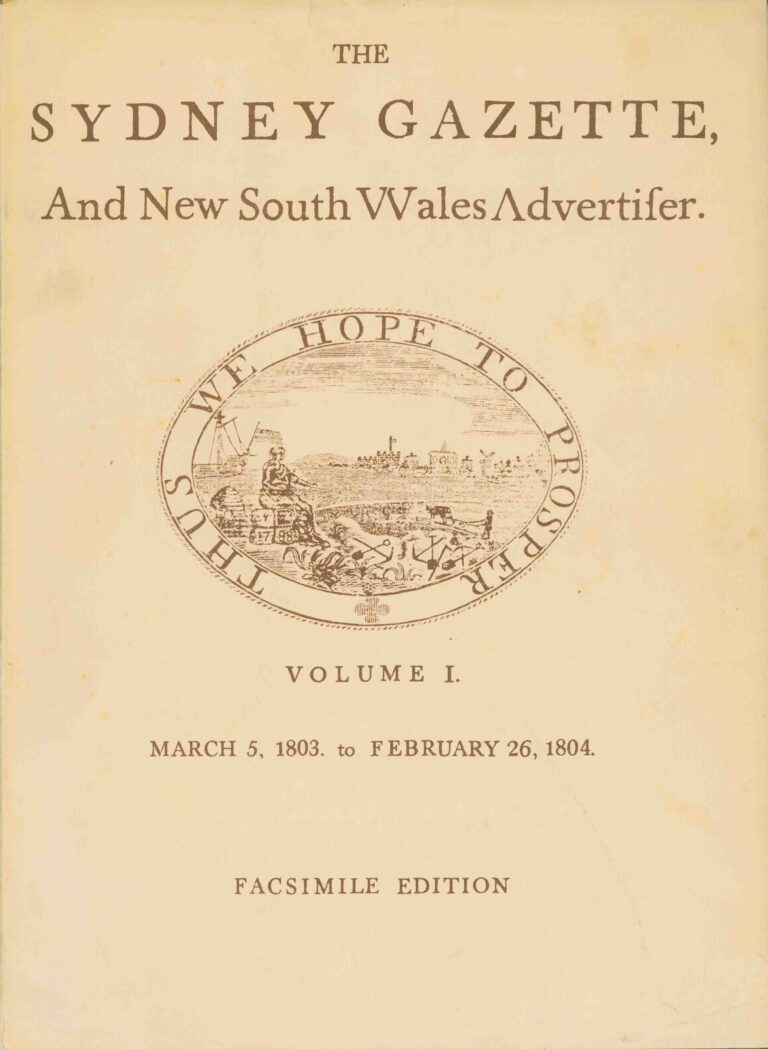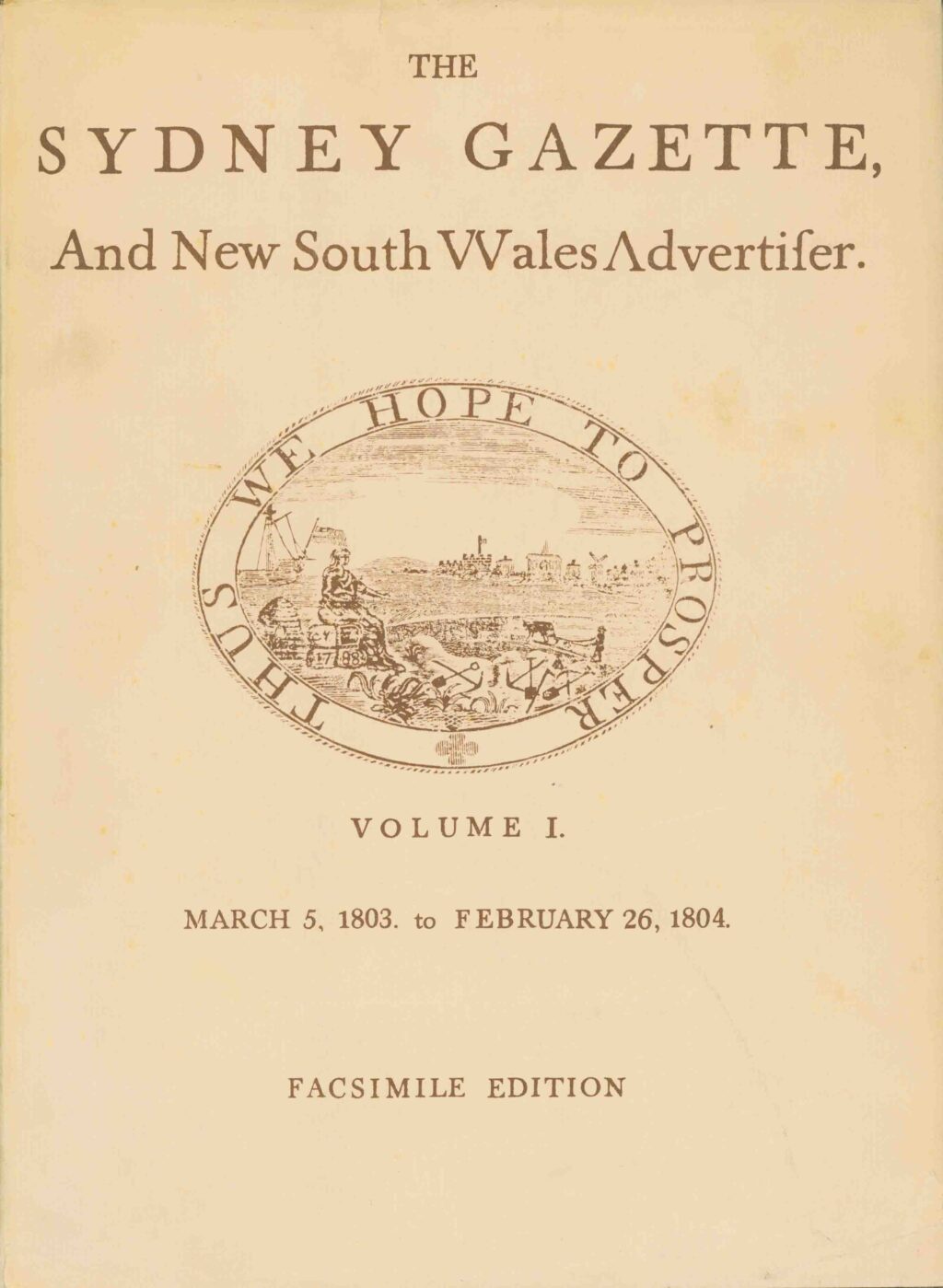William Dixson Foundation, The Sydney Gazette and New South Wales Advertiser: A Facsimile Reproduction of Volume One March 5, 1803 to February 26, 1804 (1963)
Like any political figure, Robert Menzies had mixed feelings about newspapers. He had a particularly bad relationship with those based in Sydney, which were always hyper-critical of a quintessentially Melbourne leader – so much so that NSW was almost single-handedly responsible for Menzies’s disappointing election results in 1940 and 1946.
Nevertheless, Menzies appreciated the essential role that a free press plays in a democracy, and which it had played throughout Australia’s history. Hence, we might not be that surprised to find in his collection a special copy of the first newspaper ever printed in Australia.
The reproduction was a product of the William Dixson Foundation, which was set up with a mandate to reprint historical manuscripts relating to Australasia and the Pacific with ‘no editing whatsoever’, for the benefit of students and researchers. The Foundation had been endowed by its namesake, Sir William Dixson, the son of a major tobacco manufacturer who had used his tremendous wealth to collect and salvage important photographs, maps, and manuscripts relating to Australia’s early history. In this capacity, Dixson was one of Australia’s most important ever philanthropists, alongside David Scott Mitchell.
Although historical newspapers are now easily accessible in the digital age, in the 1960s they were a rare and precious commodity, particularly when they dated to 1803. Reading the paper offers a fascinating insight into a time when the Sydney settlement was a mere 15 years old. Indeed just to look at the text is to take a step back in time, because it is so antiquated that the letter ‘s’ is written as ‘f’ when not capitalised or at the end of the word. So, for example, the paper complains of the ‘great loffes fuftained by the Settlers at Hawkefbury, from the vexatious conduct of the Boatmen by whom they fend their grain to Sydney’.
Other interesting articles document:
• A devastating fire at Woolwich Warren which had destroyed thousands of pounds worth of goods including rare armaments and a model of Gibraltar. The result of which was that ‘Two persons were in custody, on suspicion, that it was the operation of a diabolical design’.
• The escape of fugitives who had fled an agricultural convict settlement at Castle Hill.
• That people can write letters to the editor by posting them in one of two boxes: at the Issuing Store in Sydney and through a window of the Parramatta courthouse.
• 4000 Gallons of Spirits having recently arrived in the Colony from the Cape of Good Hope.
• An auction of damaged provisions and clothing deemed unfit for official use.
• That the price of poultry was becoming more affordable.
• How to prepare a piece of land to turn it into a wine vineyard (translated from French).
• The discovery of a hidden reef that may hinder ships coming in from Java.
For all that is somewhat relatable in this, the Gazette was still a far cry from a modern newspaper. Not only was the first edition a mere 4 pages long, but it did not constitute a free press and was deliberately controlled by the government. Its front page explained:
‘The utility of a PAPER in the COLONY, as it must open a source of solid information, will, we hope, be universally felt and acknowledged. We have courted the assistance of the Ingenious and Intelligent. We open no channel to Political Discussion, or Personal Animadversion. Information is our only Purpose; that accomplished, we shall consider that we have done our duty, in an exertion to merit the Approbation of the Public, and to secure a liberal Patronage to the SYDNEY GAZETTE.’
Sign up to our newsletter
Sign up for our monthly newsletter to hear the latest news and receive information about upcoming events.



